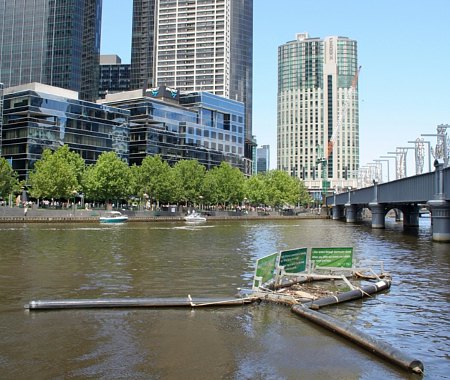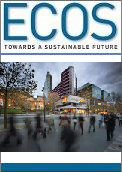
|
Published: 10 October 2011
Victorian water utility caps nutrients in effluent discharge
Victoria’s Yarra Valley Water (YVW) has become the first Australian water utility to self-impose a nutrient cap on its waterway discharges to help protect the health of local waterways and Port Phillip Bay.

|
|
Effluent discharged along the length of Melbourne’s Yarra River ends up flowing through the city into Port Phillip Bay. Credit:
Robert Kerton/ScienceImage
|
The utility’s operating area covers most of the Yarra River catchment, which runs through Melbourne and feeds into Port Phillip Bay.
‘Scientific research into the sustainable use and management of Port Phillip Bay identified that nitrogen loads into the bay were of primary concern and reductions were strongly recommended,’ says Yarra Valley Water Managing Director, Tony Kelly.
‘As our environmental objective is to provide our water and sewerage services within the carrying capacity of nature, it seemed only logical that we go beyond compliance and self-impose a nutrient cap on our discharges.’
YVW is the largest of Melbourne’s three metropolitan water utilities, servicing a population of 1.7 million. It operates six sewage treatment plants that discharge high-quality tertiary-treated effluent into the Yarra River catchment, in line with legislated concentration-based discharge limits. The nitrogen cap aims to reduce these limits even further to achieve minimal environmental impact.
The utility’s self-imposed nutrient cap of 87 tonnes per year came into effect at the end of 2008/9 and was developed using methodology verified by CSIRO and Melbourne University.
During YVW’s first year of operation under the cap in 2009/10, its total nitrogen discharges were 53 tonnes – well below target. This financial year saw an increase to 72 tonnes. This was because the land the utility usually irrigates with water from sewage treatment plants was waterlogged due to excessive wet weather.
Tony Kelly acknowledges that YVW will have to do a great deal more to remain under the cap as Melbourne’s population increases.
‘Projections indicate that with population growth, our nitrogen cap could be reached as early as 2020. We are therefore continuing to investigate further options to reduce nitrogen discharges to proactively manage the issue,’ says Mr Kelly.
As part of these investigations, YVW is keen to work with catchment stakeholders to develop a pilot program to offset nitrogen through a trading system. This would allow YVW to sell nitrogen-reduction projects in the same way that carbon offsets are currently traded in many countries to reduce greenhouse gas emissions.
YVW is working to achieve regulatory recognition for such an offset scheme in Australia.
Source: Yarra Valley Water



